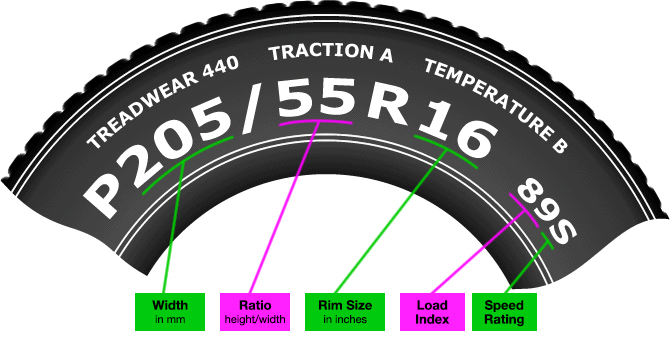Your quad is a do-anything machine. ATV’s are great for getting things done and for recreation too. But now you’re looking at your tires. Maybe you’ve blown one or they’re getting bald. Or maybe you just want a more aggressive tread pattern and a bigger tire. The problem is you’re a little lost when it comes to your ATV tire size.
How big can you go? Should you go big? How do you even know what all these numbers represent?
Don’t worry, we’ve got you covered. We’ll answer all those answers and more in this comprehensive guide.
How Do You Read ATV Tire Sizes?So, you’re shopping around for tires and you see one listed with a size like 26×10-12. Or, worse yet, you find something listed like 206/80R12.
What the heck does all that mean?
First, you need to figure out if you’re dealing with standard or metric ATV tire sizes.
ATV Tire Sizes: Standard Tire Sizing ChartStandard format is much more common on ATV tires than metric. You might see a tire size written 26×10-12 or, occasionally, 26x10x12. This format is pretty straightforward. It uses three numbers to sum up the size:
If you see a tire size that looks like this: 205/80R12, you know you’re dealing with metric. The metric format is exceedingly rare for ATVs and odds are you’ll never come across it. But if you do, the letter thrown in the middle of those numbers is a dead giveaway. In metric, you always have three numbers and a letter:
There may be other numbers and letters before and after these, but they’re not important for understanding your ATV tire size.
Breaking Down ATV Tire Sizes by the NumbersKnowing how to read those tire sizes is just the first step. You really need to know how to use them. Is 26 inches a reasonable diameter for your quad? What kind of width do you need?
You really need to know how to use them. Is 26 inches a reasonable diameter for your quad? What kind of width do you need?
When you’re considering replacing all of your tires, you’ll want to make sure you get something that will actually fit on your stock vehicle.
Your typical ATV tire diameter fits within a range of about 20 inches for the smallest machines to about 30 inches for your more factory mud-equipped machines.
Basically, your quad will typically fit into one of few categories:
Keep in mind that you’ll want to keep within a couple inches of your stock tire size. If you go too big, you’ll start to rub on your fenders (among other issues). If you go small—well, that’s just silly.
Tire width is easier to understand. Choosing the right tire width has a lot to do with your own preferences and riding style.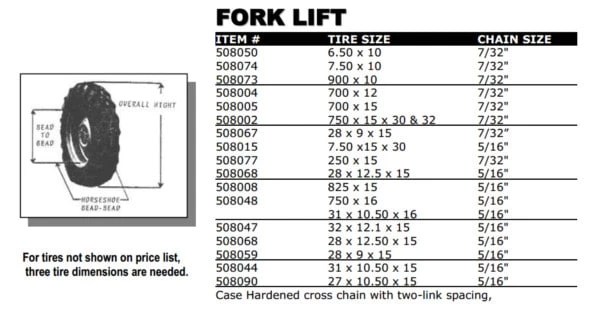
A wider tire tends to give you a flatter tread pattern and more grip. A narrow tire gives you a little more control.
ATV’s usually have a wider tire on the rear than on the front to get the best of both tires. A typical rear tire on a quad will be 10 to 11 inches wide while a front tire will be 7 to 8 inches wide.
But matching your tire width to your riding style isn’t the only thing you need to consider. You also need to make sure it’ll physically fit on your chosen wheel. There are two main ways to make sure it’ll fit.
This one is non-negotiable.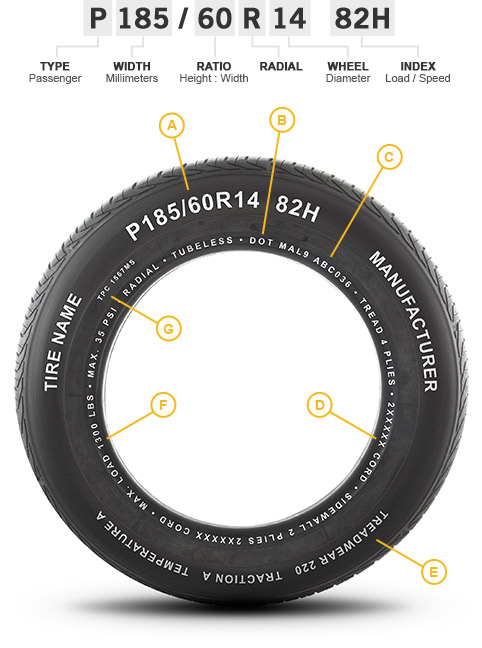 You have to make sure your tire’s wheel diameter matches your actual wheel diameter.
You have to make sure your tire’s wheel diameter matches your actual wheel diameter.
Most off-road wheels tend to be 10 to 12 inches in diameter—which is convenient considering most off-road tires are designed to fit those wheels. That’s a good size as it gives your tire plenty of cushion between the tread and rim, which results in smoother rides and more protection for your rims.
Of course, you can end up with bigger wheels if you have bigger tires, but we’re getting ahead of ourselves.
Choosing the Right Size Tires for Your ATVYou don’t need any old tire. You have to choose the perfect ATV tire size for you. After all, you ride your own way and have your own needs.
We’re going to simplify ride style to three main types:
For a workhorse ATV, it’s not a bad idea to stick with stock. It’ll give you the expected traction and power you need.
Trail riding, like dune riding, means you want to go fast.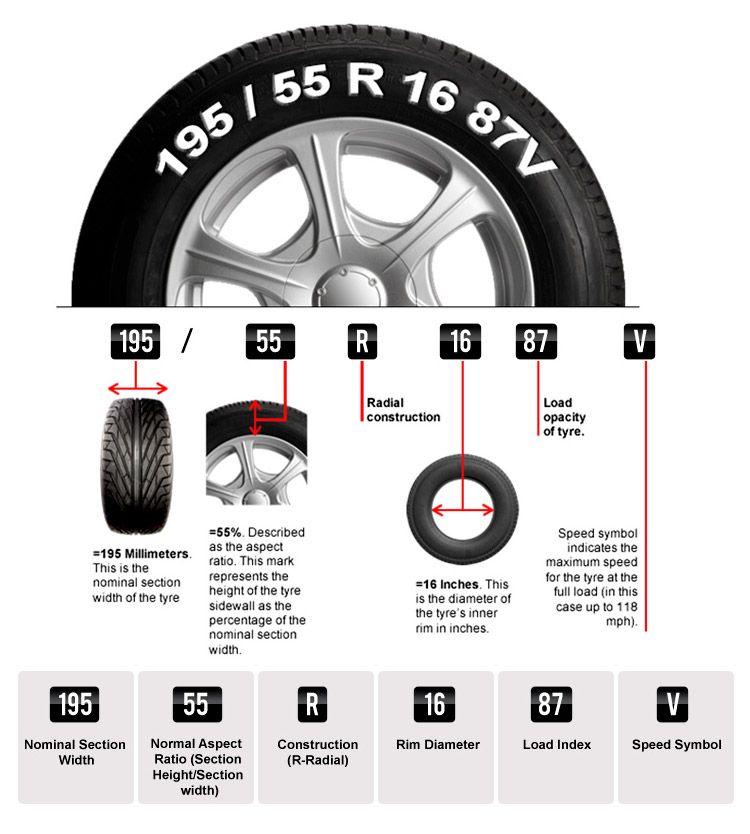 For that, a wider, flatter tire will keep you gripping and in control. If you ride in the mud, you might want to go with something bigger and narrower along with an aggressive tread pattern.
For that, a wider, flatter tire will keep you gripping and in control. If you ride in the mud, you might want to go with something bigger and narrower along with an aggressive tread pattern.Trails and dunes demand high traction, and you get that by going wider. You don’t necessarily need a taller tire, but a wider one will give you the grip you need.
Dominating rock gardens and taking on bounty holes is done best with a big tire. But going big isn’t as simple as just buying the biggest tire you see.
Can I Put Bigger Tires on My ATV?The short answer is yes.
Here comes the long answer.
Every ATV has a theoretical maximum tire size it can fit without modifying the suspension. It’s typically about one to two inches bigger than your stock tires. So if your ATV came with a 27-inch tire, you could probably fit a 29-inch tire without too much trouble.
But what if you want to go bigger?
That takes some work. You’ll either need to invest in a lift kit or some offset A-arms. These types of kits will often tell you what the max tire size is when you have them installed.
These types of kits will often tell you what the max tire size is when you have them installed.
You can’t go big without some consequences though. Namely, you’ll lose torque due to the increased diameter (big tires like a high-gear kit!) and the extra weight. The weight can also put extra strain on your clutch and shorten the life of your clutch belt.
Luckily, you can get your torque back with a transmission gear reduction or GDP Portal Gear Lift (which has a gear reduction built in).
You can also bolster your clutch with heavy-duty drive belts and eek out even more torque with a clutch kit.
So now that you’re equipped with knowledge, go equip yourself with some tires. Get the ATV tire size you want, and ride with confidence.
RELATED CONTENT: ATVs38 tires15
Share
10
ATV tire explaination: ATV tires are listed in a set of three numbers, generally separated by dashes (25-10-12), or by an ‘x’ (25x10x12) or a combination of the two: 1st Number = The overall tire height when inflated (Ex. 3rd Number = The rim or wheel diameter (Ex. 25×10-12 is 12″ in diameter).
3rd Number = The rim or wheel diameter (Ex. 25×10-12 is 12″ in diameter).
All ATV Tire sizes consist of 3 sets of numbers generally separated by dashes (ex. 25-8-12), forward slashes (ex. 25/8/12), or with an x (ex. 25x8x12). 1st Number = The overall height of the tire. (ex. 25×8-12 tire is 25″ tall.)
What do the numbers mean for an ATV tire size? Understanding ATV tire sizes. Inch size is the most widely used measurement in ATV tires. In the size 25 8.00-12, the meaning of the numbers is as follows: 25 – The overall height of the tire when mounted and inflated. 8.00 – The overall width of the tire when mounted and inflated. 12 – The diameter of the wheel this tire will mount to.
How do you size an ATV tire? Shown here is an example of ATV tire sizing. All ATV Tire sizes consist of 3 sets of numbers generally separated by dashes (ex. 25-8-12), forward slashes (ex. 25/8/12), or with an x (ex. 25x8x12). 1st Number = The overall height of the tire. (ex. 25×8-12 tire is 25″ tall.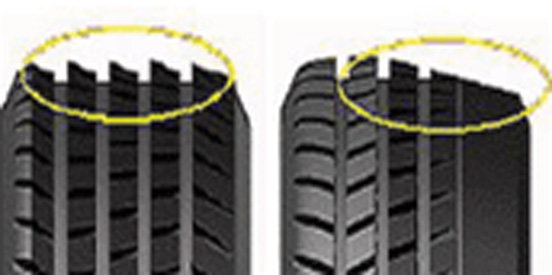 ) 2nd Number = The overall width of the tire. 3rd Number = The rim diameter.
) 2nd Number = The overall width of the tire. 3rd Number = The rim diameter.
What does the are mean on an ATV tire? This tells you the diameter of the rim for the tire on your ATV. In the example, “26X10-12,” the rim size is 12. Some numbers on ATV tires will have an “R” between the second and third number. The “R” simply means radial construction.
What is the width of an ATV tire? Notice the second number in the series of three. This number corresponds to the width of the tire or how fat the tire measures. In our example, “26X10-12,” the width of the ATV tire is 10 inches. Find the third number.
Table of Contents
355/40R22 tires have a diameter of 33.2″, a section width of 14.0″, and a wheel diameter of 22″. The circumference is 104.2″ and they have 608 revolutions per mile. Generally they are approved to be mounted on 12-14″ wide wheels.
Tire Width Is the width of the tire measured in millimeters from sidewall to sidewall. The first three-digit number in the tire size refers to the tire width. For instance, in a size P215/65 R15 tire, the width is 215 millimeters.
The first three-digit number in the tire size refers to the tire width. For instance, in a size P215/65 R15 tire, the width is 215 millimeters.
33″ Tires (+/- 0.50″ in overall diameter)
—————————————–
15″
33X950-15
33X10.50-15
33X11.50-15
Metric Standard
——— ———–
375/50/18 33.0″x 15.4
325/60/18 33.2″x 13.3
325/65/18 34.8″x 13.5
305/70/18 35.0″x 12.2
33-inch tires work well with rims that measure 15 or 16 inches in width, while 35-inch tires should only be used with rims that are at least 17-inches wide.
The current tire on my quad is a 22x11x10. The smallest size these tires have is the 22x12x10. 22 = The overall height of the tire when mounted and inflated to recommended air pressure. In this example, the tire is 22 inches tall. 12 = The overall width of the tire when mounted and inflated to recommended air pressure.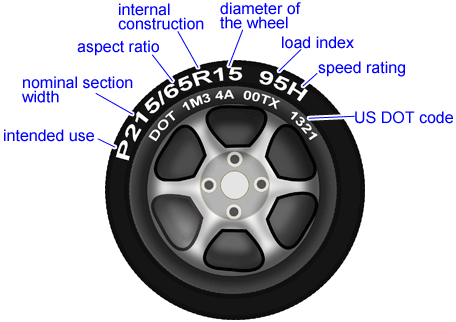
25×11-12. The ATV tires within this category are all available in the selected size; 25×11-12. The numbers 25-11-12 represent the dimensions of the tire. The first number is the height, the second number is the width & the third number is the diameter of rim that it will fit on.
50-18 is a 305/60-18 metric size. Other close sizes are 325/60-18 (33×13. 00) and 305/65-18 (34×12.
This number indicates that your tire has a width of 265 millimeters. 70. This number means that your tire has an aspect ratio of 70%. In other words, your tire’s sidewall height (from the edge of the rim to the tire’s tread) is 70% of the width.
Rim Size P-Metric Size
——— ————-
16 Inch 285/75R16
305/70R16 32.8 inches
315/75R16 34.6 inches
345/75R16 36.4 inches
B: TIRE WIDTH The three-digit number following the letter is the tire’s width (from side to side, looking at the tire head on) in millimeters.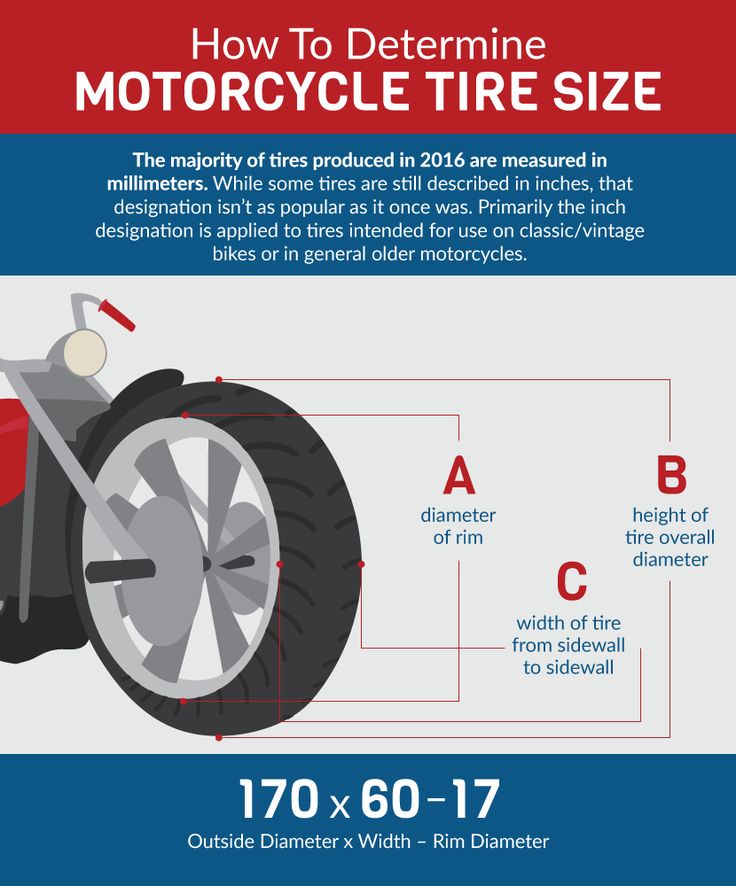 It’s the height of the sidewall measured from wheel rim to top of the tread, expressed as a percentage of tire width. In other words, it’s sidewall height divided by tire width.
It’s the height of the sidewall measured from wheel rim to top of the tread, expressed as a percentage of tire width. In other words, it’s sidewall height divided by tire width.
A 305/70/16 is a 32.8 (~33) by 12.00 inch tire.
Obviously, you will need a certain kind of tire depending on how you use your vehicle. Due to this, a 235 tire might not be better than a 225 tire, or vice versa, but depending on your situation, one tire might serve you better than the other.
This number indicates that your tire has a width of 265 millimeters. 70. This number means that your tire has an aspect ratio of 70%. In other words, your tire’s sidewall height (from the edge of the rim to the tire’s tread) is 70% of the width. In this case, the sidewall height works out to be 185 millimeters.
345/25R20 tires have a diameter of 26.8″, a section width of 13. 6″, and a wheel diameter of 20″. The circumference is 84.1″ and they have 753 revolutions per mile. Generally they are approved to be mounted on 12-13″ wide wheels.
6″, and a wheel diameter of 20″. The circumference is 84.1″ and they have 753 revolutions per mile. Generally they are approved to be mounted on 12-13″ wide wheels.
ATV tire explaination: ATV tires are listed in a set of three numbers, generally separated by dashes (25-10-12), or by an ‘x’ (25x10x12) or a combination of the two: 1st Number = The overall tire height when inflated (Ex. 3rd Number = The rim or wheel diameter (Ex. 25×10-12 is 12″ in diameter).
The first number is your overall diameter of the tire. In this example the tire diameter or “height” is 33 inches tall. The second number represents the width of the tire. In example “A” this reads 12.50, meaning the tire width is 12 and 1/2 inches.
ATV tire explaination: ATV tires are listed in a set of three numbers, generally separated by dashes (25-10-12), or by an ‘x’ (25x10x12) or a combination of the two: 1st Number = The overall tire height when inflated (Ex. 25×10-12 is 25″ tall). 3rd Number = The rim or wheel diameter (Ex. 25×10-12 is 12″ in diameter).
25×10-12 is 25″ tall). 3rd Number = The rim or wheel diameter (Ex. 25×10-12 is 12″ in diameter).
– 1st Number = The overall height of the tire. (ex. 25×8-12 tire is 25″ tall.)
– 2nd Number = The overall width of the tire. ( ex. 25×8-12 tire is 8″ wide)
– 3rd Number = The rim diameter. ( ex. 25×8-12 tires are designed to mount on a 12″ rim)
Rim Size P-Metric Size
——— ————-
16 Inch 285/75R16
305/70R16 12.2 inches
315/75R16 12.3 inches
345/75R16 13.6 inches
Do you want to choose a tire for your car, but do not understand tire markings well? It's not a problem! In this section, we will help you figure out what tire parameters are, what they mean, and which tire is right for your car.
Select tires / tire catalog

195/65 R15 91 T XL
195 is the tire width in mm.
65 - Proportionality, i.e. profile height to width ratio. In our case, it is equal to 65%. Simply put, with the same width, the larger this indicator, the higher the tire will be and vice versa. Usually this value is simply called “profile”.
Since the tire profile is a relative value, it is important to take into account when choosing rubber that if you want to put tires with a size of 205/65 R15 instead of the size 195/65 R15, then not only the width of the tire will increase, but also the height! Which in most cases is unacceptable! (except when both of these sizes are indicated in the car's operating book). You can calculate the exact data on changing the outer dimensions of the wheel in a special tire calculator.
If this ratio is not specified (for example, 185/R14C), then it is equal to 80-82% and the tire is called full profile. Reinforced tires with this marking are usually used on minibuses and light trucks, where a large maximum wheel load is very important.
Reinforced tires with this marking are usually used on minibuses and light trucks, where a large maximum wheel load is very important.
R - means a tire with a radial cord (in fact, almost all tires are made this way now).
Many mistakenly believe that R- means the radius of the tire, but this is the radial design of the tire. There is also a diagonal design (indicated by the letter D), but recently it has practically not been produced, since its performance is noticeably worse.
15 - wheel (rim) diameter in inches. (It is the diameter, not the radius! This is also a common mistake). This is the “landing” diameter of the tire on the disk, i.e. is the inside size of the tire or the outside of the rim.
91 - load index. This is the level of maximum permissible load on one wheel. For passenger cars, it is usually done with a margin and is not a decisive factor when choosing tires (in our case, IN - 91 - 670 kg. ). For minibuses and small trucks, this parameter is very important and must be observed.
). For minibuses and small trucks, this parameter is very important and must be observed.
T is the tire speed index. The larger it is, the faster you can ride on this tire (in our case, IS - H - up to 210 km / h). Speaking about the tire speed index, I would like to note that with this parameter, the tire manufacturer guarantees the normal operation of the rubber when the car is constantly moving at the specified speed for several hours.
There are two different American tire markings. The first one is very similar to the European one, only the letters “P” (Passanger - for a passenger car) or “LT” (Light Truck - light truck) are placed before the size. For example: P 195/60 R 14 or LT 235/75 R15. And another tire marking, which is fundamentally different from the European one.
Example: 31x10.5 R15 (corresponds to European size 265/75 R15)
31 is the outside diameter of the tire in inches.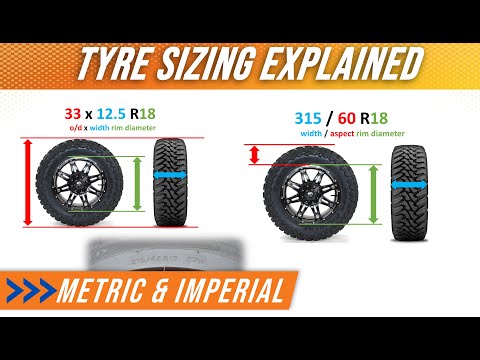
10.5 is tire width in inches.
R - a tire with a radial design (older tire models were with a diagonal design).
15 is the inner diameter of the tire in inches.
Generally speaking, except for inches that are unusual for us, the American tire marking is logical and more understandable, unlike the European one, where the height of the tire profile is not constant and depends on the width of the tire. And here everything is simple with decoding: the first digit of the standard size is the outer diameter, the second is the width, the third is the inner diameter.
XL or Extra Load is a reinforced tire, the load index of which is 3 units higher than that of conventional tires of the same size. In other words, if a given tire has a load index of 91 marked XL or Extra Load, then this means that with this index, the tire is able to withstand a maximum load of 670 kg instead of 615 kg (see the table of tire load indices).
M+S or tire marking M&S (Mud + Snow) - mud plus snow and means that the tires are all-season or winter. Many summer tires for SUVs are labeled M&S. However, these tires must not be used in winter, as winter tires have a completely different rubber compound and tread pattern, and the M&S badge indicates good flotation performance.
All Season or AS all season tires. Aw (Any Weather) - Any weather.
Pictogram * (snowflake) — rubber is designed for use in harsh winter conditions. If this marking is not on the sidewall of the tire, then this tire is intended for use only in summer conditions.
Aquatred, Aquacontact, Rain, Water, Aqua or icon (umbrella) Special rain tires.
Outside and Inside ; asymmetric tires, i.e. It is important not to confuse which side is the outside and which is the inside. When installing, the Outside inscription must be on the outside of the car, and Inside on the inside.
RSC (RunFlat System Component) - RunFlat tires are tires on which you can continue to drive a car at a speed of no more than 80 km / h with a FULL tire pressure drop (due to a puncture or cut). On these tires, depending on the manufacturer's recommendations, you can drive from 50 to 150 km. Different tire manufacturers use different designations for RSC technology. For example: Bridgestone RFT, Continental SSR, Goodyear RunOnFlat, Nokian Run Flat, Michelin ZP etc.
Rotation or arrow This marking on the tire sidewall indicates a directional tire. When installing the tire, you must strictly observe the direction of rotation of the wheel, indicated by the arrow.
Tubeless - tubeless tire. In the absence of this inscription, the tire can only be used with a camera. Tube Type - indicates that this tire must be used only with a tube.
Max Pressure ; maximum allowable tire pressure. Max Load - the maximum allowable load on each wheel of the car, in kg.
Reinforced or the letters RF in the size (for example 195/70 R15RF) means that this is a reinforced tire (6 layers). The letter C at the end of the size (for example 195/70 R15C) indicates a truck tire (8 layers).
Radial this marking on the rubber in the standard size means that it is a radial construction tire. Steel means that there is a metal cord in the tire structure.
Letter E (in a circle) - the tire meets the European requirements of ECE (Economic Commission for Europe). DOT (Department of Transportation - US Department of Transportation) is an American quality standard.
Temperature A, B, or C The temperature resistance of the tire at high speeds on the test bench (A is best).
Traction A, B, or C
Treadwear ; relative expected mileage compared to a specific US standard test.
TWI (Tread Wear Indiration) - tire tread wear indicators.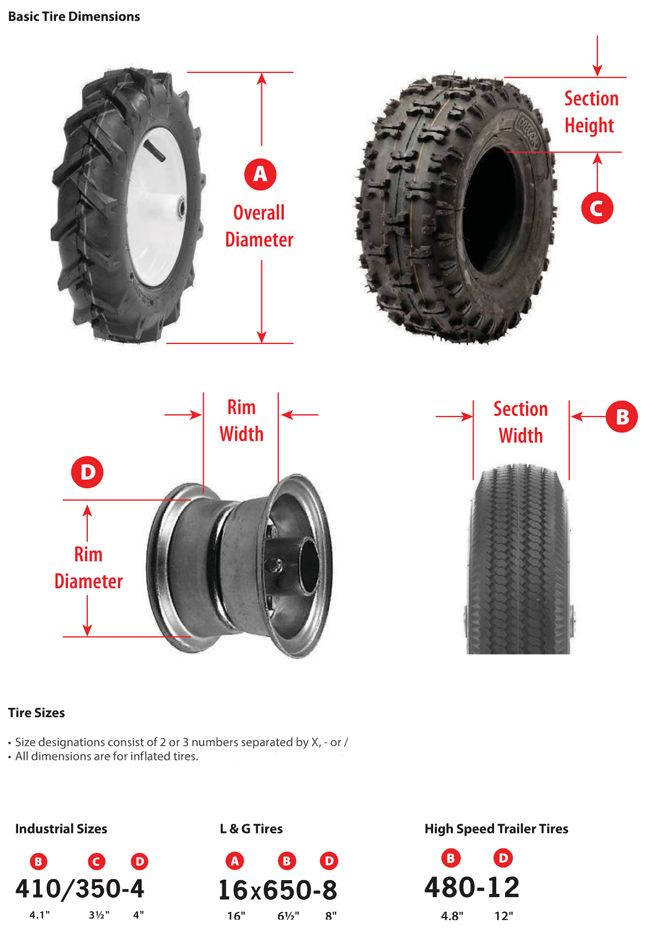 The marking on the TWI wheel can also be with an arrow. Pointers are located evenly in eight or six places around the entire circumference of the tire and show the minimum allowable tread depth. The wear indicator is made in the form of a protrusion with a height of 1.6 mm (the minimum tread value for light vehicles) and is located in the tread recess (usually in the drainage grooves).
The marking on the TWI wheel can also be with an arrow. Pointers are located evenly in eight or six places around the entire circumference of the tire and show the minimum allowable tread depth. The wear indicator is made in the form of a protrusion with a height of 1.6 mm (the minimum tread value for light vehicles) and is located in the tread recess (usually in the drainage grooves).
DOT - Manufacturer's coded address, tire size code, certificate, issue date (week/year).
Choose tires / tire catalog
www.adv.rbc.ru
www.adv.rbc.ru
www.adv.rbc.ru
Autonews
TV channel
Newspaper
Pro
Investments
+
New economy
Trends
Real estate
Sport
Style
National projects
City
Crypto
Debating club
Research
Credit ratings
Franchises
Conferences
Special projects St. Petersburg
Petersburg
Conferences St. Petersburg
Special projects
Checking counterparties
Library
Podcasts
ESG index
Politics
Economy
Business
Technology and media
Finance
RBC CompanyRBC Life
www.adv.rbc.ru
Photo: Shutterstock
www.adv.rbc.ru
See also
Numbers and letters on a car tire provide all the necessary information about it. True, it is not easy to read them - here, even in the designation of one parameter, several measurement systems can be used simultaneously.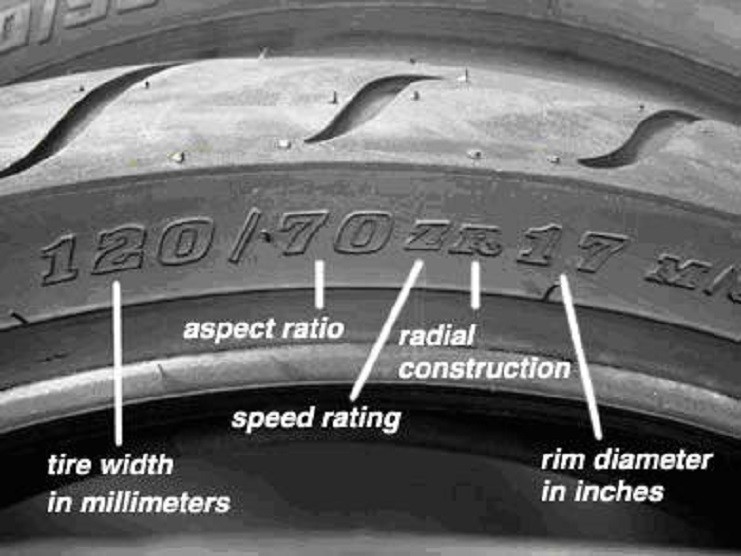 In addition, many values are expressed in special indices. We decipher all important labels for the buyer.
In addition, many values are expressed in special indices. We decipher all important labels for the buyer.
www.adv.rbc.ru
A tire marking is information about its properties printed on the outer rim. This is a huge amount of useful information. Here are the tire parameters that can be read from the tire itself:
The size designation is written in the form XXX/XX R XX. For example 225/65 R17.
The first three digits are the tire width in millimetres.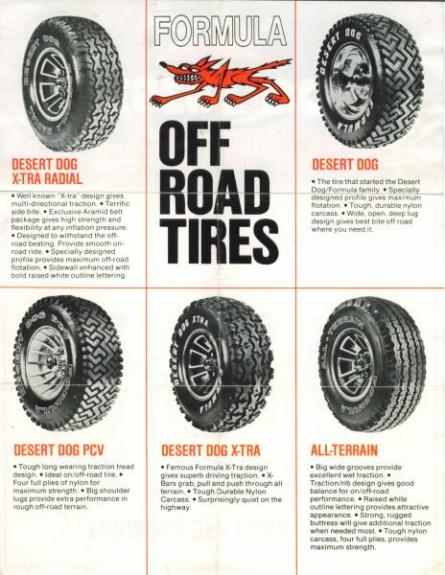 In our case - 225 mm.
In our case - 225 mm.
The second digit is the height, but not in millimeters, but as a percentage of the width. In our case, its height is 146.25 mm (225 * 0.65).
The third number after R is the outside diameter of the wheel or the inside diameter of the tire in inches. In our case, this is 17 inches or 43.18 cm. Do not confuse - this is the radius, not the diameter. The letter R itself stands for the radial design of the tire, which confuses many. Sometimes Radial can be written separately on the bus - the meaning is the same. In addition to the radial, there is also a diagonal design (D), but these are not found today.
Two numbers and a letter immediately follow the size. These are the codes for the load capacity and speed limit of the tire.
Two digits - capacity or load index. This is a complex system of values, in which the larger the number, the greater the load, but the step size between the values is not constant.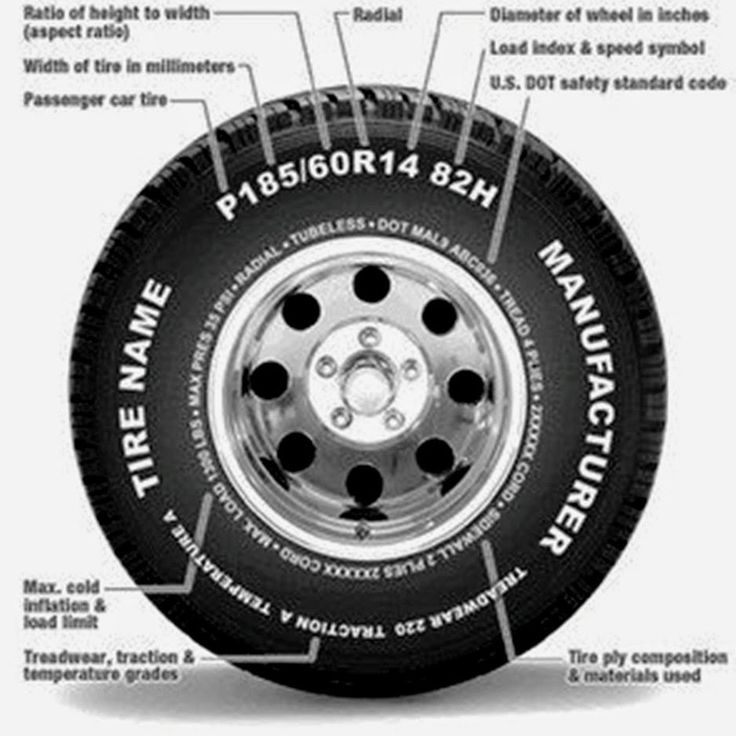 Therefore, it is easier to just know the most common of them:
Therefore, it is easier to just know the most common of them:
The index value is the load on each wheel separately. To calculate the total load capacity, multiply by 4.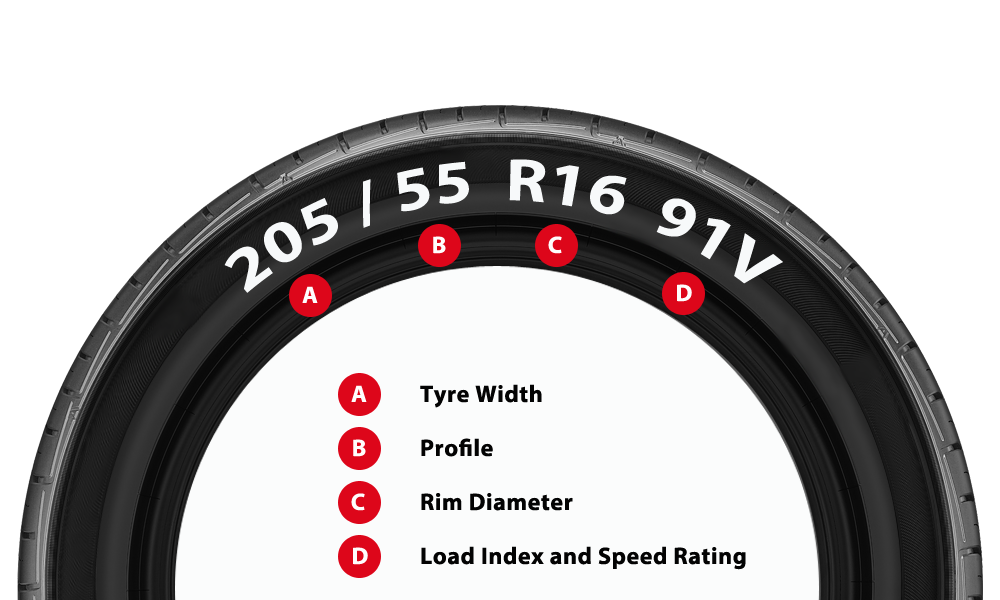 This value can also be written elsewhere in a simpler form: Max load - xxx kg.
This value can also be written elsewhere in a simpler form: Max load - xxx kg.
Photo: Shutterstock
The letter after the two digits of the load index is the index of the maximum speed for which the tire is designed. It starts with A, but the values relevant for modern machines start from the second half of the Latin alphabet:
This is not the limit, but the maximum "comfortable" value. In exceptional cases, you can even exceed it by 20-30%, but it is better to avoid this.
Another key parameter is the timing of the tire.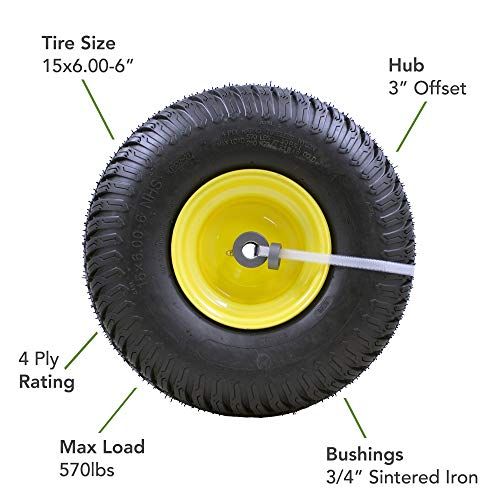 Usually it is indicated in a rounded rectangle, but may be without a frame. The first two digits are the week, and the second two are the year.
Usually it is indicated in a rounded rectangle, but may be without a frame. The first two digits are the week, and the second two are the year.
Also, three more parameters are usually indicated on the tire - wear resistance margin, grip quality class and temperature index.
The wear index is denoted by the word treadwear. Its unit is 480 km. Multiply the number next to that word by that value. If treadwear is 400, it means that under test conditions at the test site, such a tire has worn out after driving 192,000 km. Also, this parameter can be designated separately as the abbreviation TWI.
Traction is a measure of how well a tire grips on wet road surfaces. It has values from AA - the best level, to CC - the worst. Tires for regular passenger cars usually have class A, and the highest class is for sports and racing.
Temperature is the tire's ability to withstand heat when driving at a certain speed. There are three values here:
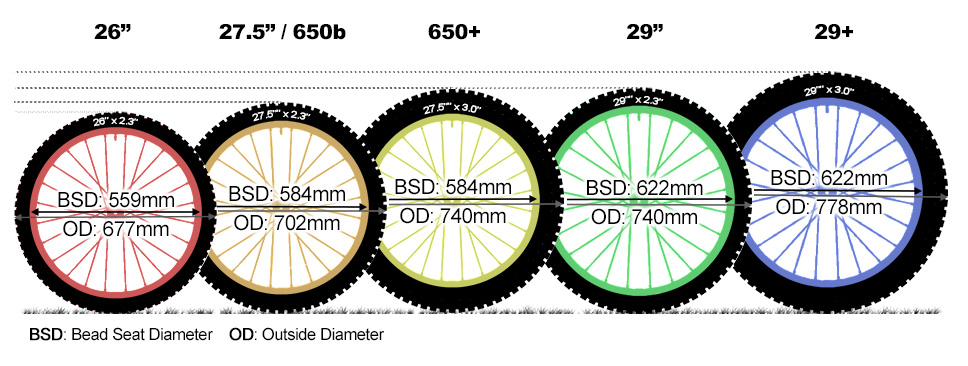
Tires of modern passenger cars most often have this index value - A.
Photo: Shutterstock
The letter E with a number indicates that the tire complies with the rules of the European Tire Standards Association (ETRTO) and has a corresponding certificate . The number indicates the country that issued it - but this does not matter, since the ETRTO requirements are the same. In this case, the tire can be produced anywhere.
The weather conditions in which it is permissible to use this tire are also usually indicated:
Winter tires must have a first, second or third designation.
On some tires you can find the designation of the type of car for which they are intended:
In addition, the tire may be marked:
